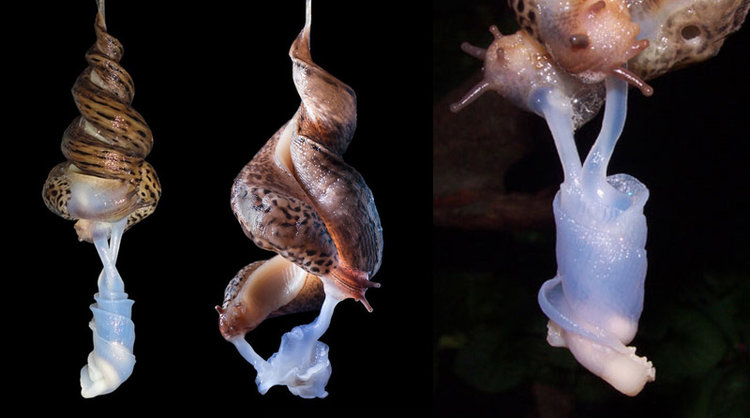To transform us from small fish into the brain-heavy apes we are now, our ancestors spent billions of years having sex.
Don’t get squirmy. Like every species on the planet, we exist as links between the past and the future, and sex is how most of us pass on our genes. We create specialized cells called gametes – eggs and sperm – that can fuse with other gametes and replicate segments of our DNA.
We are surrounded by a planet madly making love, smearing gametes everywhere. There are days when we humans go swimming in twinkling blue bays of oyster orgies, wading in a sea of their sperm and eggs. Around us, swooning oyster beds have sex simultaneously by releasing millions of gametes into the water.
Because water is viscous, the gametes don’t dry out like they do on land. Instead, they drift through the bay, in search of their other halves. (What’s that caught in your hair?)
Being able to create both eggs and sperm improves your chances of reproducing, and hermaphroditism is common in the animal kingdom. A lot of oysters are sequentially hermaphroditic, which means they change sex over their lifetimes. In their first year, they produce sperm. As they mature, they produce their more energy costly eggs.
Land snails are hermaphrodites too. They can digest their partners’ sperm and use it as a source of protein, or go ahead and make a baby with it. Some snails engage in an epic battle to save their sperm from being digested. Grappling with each other for up to six hours, they try to impale their mates with love darts. The love darts are covered in a mucous containing a hormone which increases the likelihood the snail’s sperm will be used for mating instead of lunch.
Some snails can fertilize themselves, but typically they only do so when they have failed to find a partner. Similar genetic material makes for less viable offspring with a lower chance of survival. Still, a couple of dopey baby snails are better than none.
Reproduction can be a dangerous affair.
The snails’ love darts are huge, sometimes a third of the length of the snail. Shooting them into the other snail’s genitals – which are located just behind their eye stalks – is a tricky business. Snails can’t see so well; the darts often end up lodged in their mate’s heads or sides.
Snail love darts. Joris M. Koene and Hinrich Schulenburg
At least they try to aim.
The male Dana Octopus Squid claws holes in his mate and injects her with sperm. The Greater Hooked Squid doesn’t even bother ripping a hole: his sperm has enzymes that dissolve her skin and wiggle their way on in.
And octopuses, the smartest mollusks, do they enjoy sex? Well, some females have been observed eating their lovers when the date is over. It’s possible they enjoy the meal.
More SEX
The beautiful mating dance of the European Leopard slug. Those pearly appendages are their penises.


